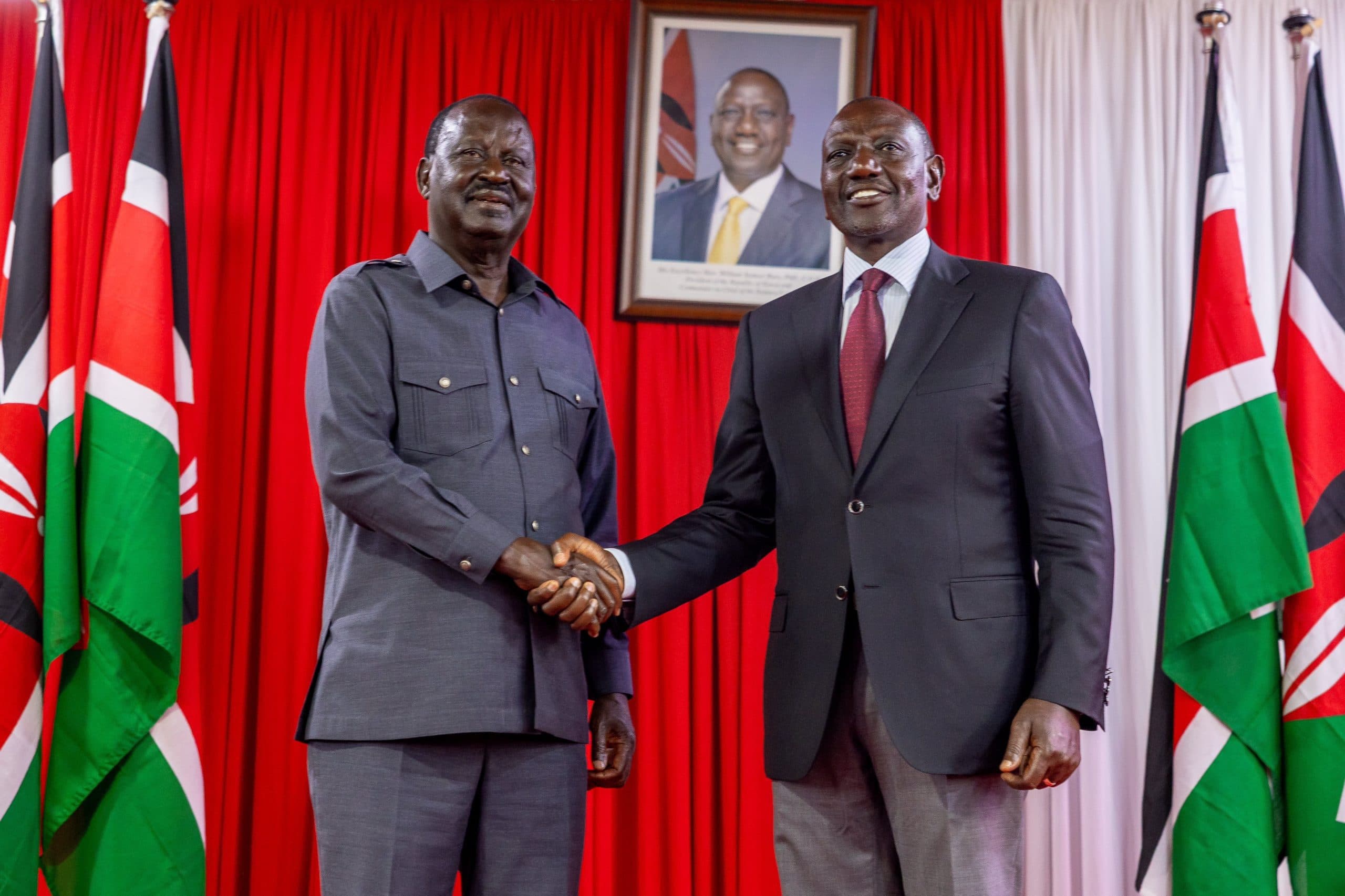Loading News Article...
We're loading the full news article for you. This includes the article content, images, author information, and related articles.
We're loading the full news article for you. This includes the article content, images, author information, and related articles.
Deputy President Kithure Kindiki has asserted that the political alliance between President William Ruto and ODM leader Raila Odinga is formidable, making it impossible for any opposing force to secure victory in the 2027 General Election.

Speaking on Monday, October 13, 2025, at a boda boda empowerment event in Siaya, Deputy President Kithure Kindiki dismissed the ambitions of emerging political figures aiming to challenge the coalition between President William Ruto and former Prime Minister Raila Odinga in the 2027 General Election, terming their efforts as "impossible." Kindiki emphasised that the Ruto-Odinga alliance represents a "broad-based" administration committed to delivering on its promises to Kenyans.
The alliance between President Ruto's United Democratic Alliance (UDA) and Odinga's Orange Democratic Movement (ODM) marks a significant shift in Kenya's political dynamics. Historically, Ruto and Odinga have been fierce political adversaries. However, their warming relationship began with President Ruto's endorsement of Odinga's candidacy for the African Union Commission (AUC) chairmanship. This move was widely seen as a strategic effort by Ruto to cultivate goodwill and potentially reduce Odinga's direct engagement in domestic politics, thereby strengthening his own position ahead of 2027.
In March 2025, President Ruto and Odinga formalized their collaboration by signing a memorandum of understanding, establishing a "broad-based government" aimed at addressing national challenges such as debt and corruption. This pact followed youth-led protests in 2024 against new tax proposals, which reportedly led to a crisis for Ruto's government and prompted the formation of this alliance. The alliance has since seen the inclusion of Odinga's allies in government and joint parliamentary group meetings to discuss a 10-point agenda for cooperation.
The formation of this broad-based government, while touted for national unity and progress, has raised questions regarding constitutional oversight and the role of a robust opposition. Critics, such as Kisii Senator Richard Onyonka, have expressed concerns that a lack of a strong opposition could undermine constitutional checks and balances. However, proponents argue that such an alliance fosters stability and effective governance, especially in implementing development agendas.
Deputy President Kindiki, who assumed office on Friday, November 1, 2024, following the impeachment of former Deputy President Rigathi Gachagua, has consistently defended the alliance. He has highlighted the government's investment in the Lake Victoria region, citing KSh 3.2 billion in grants for beach management to boost fish farming and tourism, attributing this progress to the joint leadership of President Ruto and Mr. Odinga. Kindiki stated, "The amount of development in Siaya has never happened since Kenya gained independence. This is the first government to invest in the blue economy to improve the lives of fish farmers, with the support of Raila Odinga."
Political analysts like Felix Arego suggest that Odinga's alignment with Ruto is less about idealism and more about political survival, as Odinga has lost the traditional role of opposition leader. Meanwhile, some opposition figures, such as Machakos Deputy Governor Francis Mwangangi, maintain that leaders like Wiper's Kalonzo Musyoka will remain in opposition, emphasising the importance of a strong opposition for government accountability.
The Ruto-Raila alliance carries several implications for Kenya's political future. While it promises stability and national unity, it could also lead to a weakened opposition, potentially affecting democratic checks and balances. The alliance's long-term viability may also depend on the outcome of Odinga's AUC bid; a loss could see him return to local politics, potentially altering the current political calculus. Furthermore, the alliance has sparked debate about whether Odinga's association with the government, which has faced accusations of human rights violations and police brutality, contradicts his traditional democratic ideals.
Despite Kindiki's strong assertions, the full extent and nature of the Ruto-Raila alliance remain subject to speculation. While some allies suggest a long-term partnership extending beyond 2027, Odinga himself has indicated that a pre-election alliance for 2027 will be decided by party members at the appropriate time. The emergence of new political movements, such as the "Kenya Moja" movement comprising youthful legislators, indicates a desire for alternative political directions outside the UDA-ODM dominance.
As Kenya approaches the 2027 General Election, political realignments are expected to intensify. The implementation of the 10-point agenda between UDA and ODM will be closely monitored, with quarterly joint parliamentary group meetings planned to review progress. The political landscape could also be influenced by the ongoing efforts of a united opposition, which includes figures like former Deputy President Rigathi Gachagua, Martha Karua, and Kalonzo Musyoka, who are exploring potential candidacies and alliances.
Observers will be keenly watching the sustained implementation of the UDA-ODM 10-point agenda and any further formalisation of their alliance. The political manoeuvres of the fragmented opposition, particularly efforts to coalesce around a single presidential candidate, will also be a key area of focus. Additionally, the role of youth activism and its potential to influence voter behaviour in 2027 remains a significant factor.
Keep the conversation in one place—threads here stay linked to the story and in the forums.
Other hot threads
E-sports and Gaming Community in Kenya
Active 6 months ago
Popular Recreational Activities Across Counties
Active 6 months ago
Investing in Youth Sports Development Programs
Active 6 months ago
The Role of Technology in Modern Agriculture (AgriTech)
Active 6 months ago